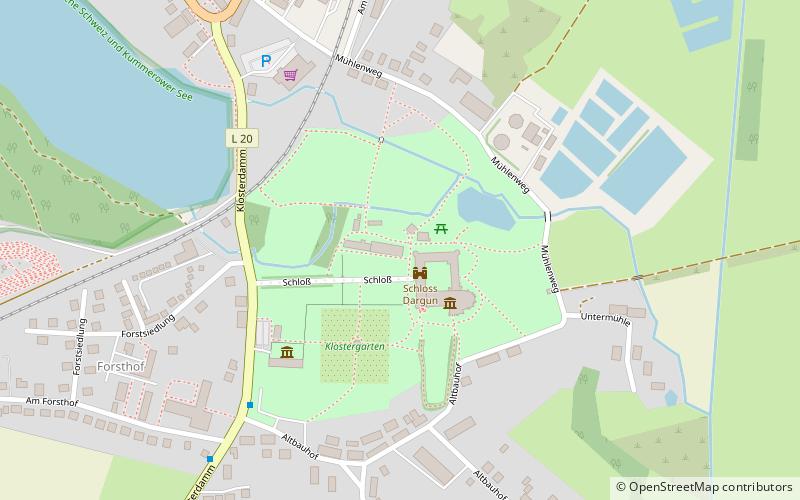Dargun Palace


Facts and practical information
Dargun Palace, nestled in the picturesque region of Mecklenburg-Western Pomerania, Germany, is a historic site that exudes a serene blend of religious heritage and architectural beauty. Originally established as a Cistercian monastery in the 12th century, the palace has undergone a remarkable journey through time, bearing witness to the ebb and flow of European history.
The monastery was a thriving center of spiritual and agricultural life for many centuries, contributing significantly to the development of the surrounding area. However, the secularization process during the Reformation led to the monastery's dissolution, and its structures were repurposed for various uses, including serving as a ducal palace.
Today, Dargun Palace is a testament to the region's rich cultural tapestry, offering visitors a glimpse into the monastic lifestyle of the Middle Ages as well as the grandeur of ducal residences. The remains of the monastery, including the impressive abbey church ruins, invoke a sense of historical contemplation, while the palace's later additions highlight the evolution of architectural styles through the Renaissance and Baroque periods.
Although the palace suffered significant damage during World War II, restoration efforts have been undertaken to preserve its historical significance. Now, Dargun Palace is not only a site of historical interest but also a venue for cultural events, concerts, and exhibitions, which breathe new life into its ancient walls.
Dargun Palace – popular in the area (distance from the attraction)
Nearby attractions include: Klosterkirche St. Marien, Klosterruine Dargun.


